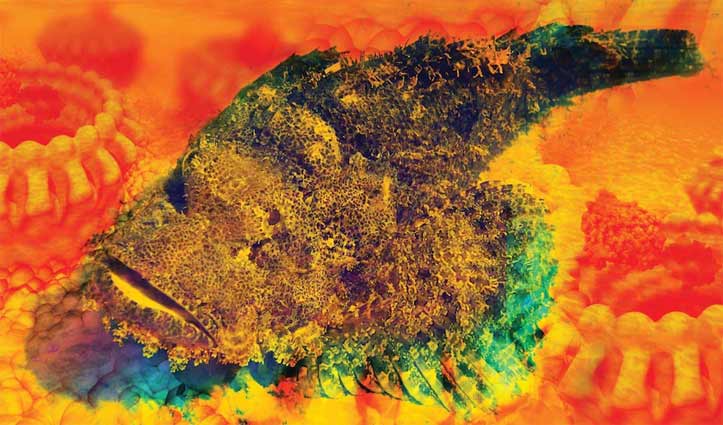Rare, dangerous sea creatures wash up in Northern Territory

WeirdNews
The fish's dorsal spines can inject deadly venom into a human foot or animal's mouth.
SYDNEY (Web Desk) - Northern Australia is a haven for deadly creatures on land and in sea. But heavy weather has brought in a few rarities that have taken residents by surprise.
Naturalist Nick Volpe said he made a discovery after wading waist-deep through muddy water during a fish-hunting science project off Darwin's Mindil Beach late last month.
He said he was sitting on a rock, taking a break from the hot weather when he noticed a little movement coming from two stones.
The "stones" were among the world's most venomous fish, synanceia horrida, or estuarine stonefish.
The fish's dorsal spines can inject deadly venom into a human foot or animal's mouth.
"I've never seen one completely buried in the mud before; just the front half of it or the mouth was exposed," he said.
He said he used his sunglasses to open its mouth.
Museum and Art Gallery of the Northern Territory curator of fishes Michael Hammer said Darwin's recent 8-metre tides had exposed interesting creatures.
"The rock pools become exposed and some animals get stranded or we come in contact with them when we wouldn't normally see them," Dr Hammer told ABC's Adam Steer.
"Stonefish secrete a white mucus that attracts algae to grow on them so they look more like a rock."
St John Ambulance NT northern regional manager James Stewart said victims of stings should seek medical attention and could run the affected area under hot water for at least 30 minutes.
Suit up
There is also good reason to be wary on the water's edge after a number of beachwalkers reported box jellyfish at the shore.
Darwin Surf Life Saving Club president Michelle Taylor said her fellow members always wore suits in stinger season between October and May.
She said stingers on the sand or in tidal pools were also dangerous.
"If I wanted to swim, I would not swim in the ocean at the moment," she told ABC's Jo Laverty.
Her advice for a sting was to apply vinegar and pull the tentacles off by hand.
Finding their fleet
Marine scientist and "sea snake queen", Blanche d'Anastasi, said she was exploring Lee Point during the monsoon when she found a rare violet globe snail.
She said it was part of a group of animals called "the blue fleet".
"The blue fleet lives at the interface between the air and the water and they're these like predatory stingy blue organisms that are all cruising around eating each other," she told ABC's Liz Trevaskis.
"It [the violet globe snail] floats around upside down on the surface using a bubble raft made of its own mucus."
She said they hunted species such as blue buttons, which were washing up on Darwin's beaches in large numbers.
"It can also envenomate a human and paralyse you and or at least make you vomit everywhere."
Other pillars of the highly venomous blue fleet include the by-the-wind-sailor, or velella, bluebottles, and blue dragons.
Why now? Why here?
Charles Darwin University aquatic ecology research fellow Osmar Luiz said box jellyfish were to be expected, but were open water animals along with snails.
"The reason they have appeared on the beaches at the same time is probably linked to the rough weather and high tides," he said.
"Lee Point's geography, somewhat advanced and exposed into the ocean, makes it a place that naturally aggregates oceanic animals."

